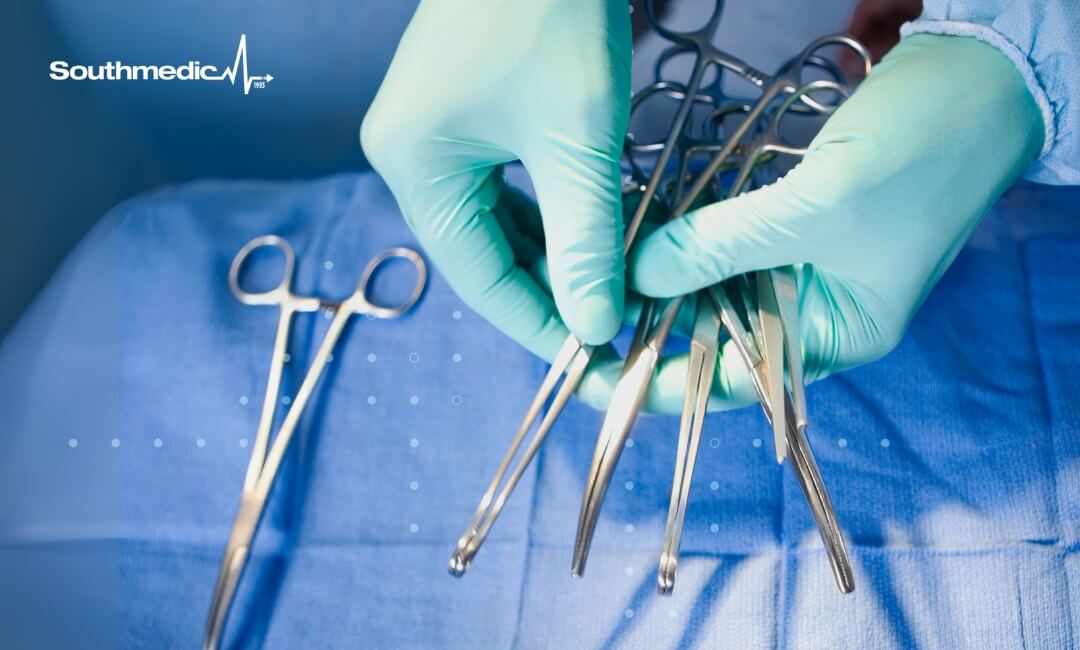In the early hours of a busy Monday, the OR was already humming. A total knee replacement had just wrapped up when Jamie, a seasoned SPD tech with over a decade on the job, received a tray marked “STAT CLEAN.” It was a familiar rush—pressure mounting, expectations high. But as she opened the tray, her stomach dropped. Dried blood caked into the hinge of a rongeur. Tissue crusted inside a lumen. The case was over an hour ago. No pre-treatment. No moisture. Just a hardened reminder of a shortcut taken upstream.
Moments like these are all too common in sterile processing departments across the country—and they come at a cost. A delay here. A canceled case there. Worse yet, a patient safety risk hiding in plain sight. The truth is, medical device cleaning is the unsung hero of patient care. It’s not flashy, but it’s foundational. That’s why we’ve put together this straightforward, no-nonsense guide—to reinforce the critical steps every SPD professional should follow, every time, without exception.
Cleaning medical devices isn’t just a box to check—it’s one of the most critical steps in protecting patients and preserving the value of your hospital’s most-used tools. And while technologies, standards, and products continue to evolve, the core truth remains: if an instrument isn’t clean, it can’t be sterilized right. Full stop.
This guide cuts through the fluff. Whether you’re a seasoned sterile processing tech or new to the field, it’s about doing it right—not just fast. And that starts with understanding the proper process from the moment an instrument leaves the OR to when it’s wrapped and ready for the next case.
Step 1: Handle at the Point of Use
Instrument care starts before the tools ever hit the decontamination room. As soon as the case ends, used instruments should be kept moist to prevent bioburden forming and drying on. An enzymatic pre-spray (ideally foam spray) can make a world of difference. The enzymes help battle bioburden formation upon contact! Instruments sitting dry for any length of time makes the manual cleaning process much more tedious. A pre-treatment spray or enzymatic foam can make a world of difference. If bioburden dries on instruments, the additional time and effort to clean off your instrument and risk of damage to the instrument increases.
Step 2: Pre-Cleaning and Rinsing
Once in decontam, rinse instruments under cool running water. Not hot—that can denature proteins and make blood and tissue bind more tightly. This step removes gross soil and helps prepare the surface for enzymatic action. Pay extra attention to hinges, locks, serrations, and lumens.
Step 3: Manual Cleaning with Enzymatic Detergent
Now comes the real work. Submerge instruments in a basin of fresh enzymatic detergent—neutral pH, non-corrosive, multi-enzyme formulas are ideal here. (Think: EcoZyme Ultra) Following the detergent temperature, contact time, and dilution rate reduces the amount of mechanical cleaning required to clean your instruments with less force.
The goal is to physically remove soil the enzymes have loosened. No shortcuts. Miss a hinge, and you’re leaving a microbe party intact.
Step 4: Ultrasonic Cleaning
For complex or cannulated instruments, ultrasonic cleaning isn’t optional. It’s essential. Cavitation bubbles reach where brushes can’t, disrupting biofilm and pulling debris out of fine channels. Use a fresh solution each cycle, and make sure instruments are fully submerged and not touching.
Ultrasonic doesn’t sterilize, but it sets the stage for success. Think of it as your second chance to get where manual cleaning couldn’t.
Step 5: Rinse and Dry Thoroughly
Rinse with treated or deionized water to remove all detergent residue. Leftover residue can cause spotting, staining, or worse—instrument degradation. Once rinsed, dry completely. Moisture left behind is an invitation to corrosion. Air drying or lint-free cloths are your friends here. Skip the paper towels.
Step 6: Inspect, Lubricate, and Prep for Sterilization
Every instrument should be visually inspected under adequate lighting. Look for cracks, pits, residue, or rust. The use of a visual inspection device (i.e. Borescope) is recommended to inspect the lumen. Anything suspect should be pulled for recleaning, repair, or disposal.
For hinged instruments, apply a water-soluble, instrument-grade lubricant. This keeps joints moving smoothly and helps prevent corrosion over time.
Then organize and arrange sets as per tray layout guides. Don’t overcrowd. Instruments should be open, unlocked, and positioned to allow full steam penetration.
Step 7: Sterilize According to IFUs
Steam sterilization remains the gold standard, but the settings matter. Follow manufacturer instructions—not just for the autoclave, but for each instrument. Some tools require specific exposure times or lower temperatures. Overloading the chamber? That’s a rookie mistake. It blocks steam flow and compromises the cycle.
Step 8: Store Instruments with Intention
Sterilized instruments aren’t museum pieces. They’re working tools—but only if they stay sterile. Store them in a clean, dry, temperature- and humidity-controlled environment. Don’t stack wrapped trays. Don’t shove containers into cabinets. Give your sets the space they need to stay intact and uncompromised.
Step 9: Maintain, Track, and Train
Maintenance doesn’t end after sterilization. Implement tracking systems to log cleaning cycles, repairs, and usage. Educate your team continuously—not just on processes, but on the “why” behind each step. The more they understand the impact of what they do, the more vigilant they’ll be.
Training also ensures consistency. No two techs should clean the same instrument two different ways. Standardization reduces errors, extends tool life, and ensures compliance.
Final Word
Cleaning medical devices might not feel glamorous. But it’s one of the most important jobs in the hospital. When done right, it protects patients, surgeons, and your bottom line. When done wrong, it introduces risk at every level.
Follow the process. Use the right tools. And if your detergent isn’t enzymatic, neutral-pH, and non-corrosive—it’s time to upgrade.
Southmedic’s Ecozyme Ultra is engineered for exactly this: breaking down bioburden while protecting the surgical investment your facility relies on every day.
Clean is the baseline. Safe is the goal.

